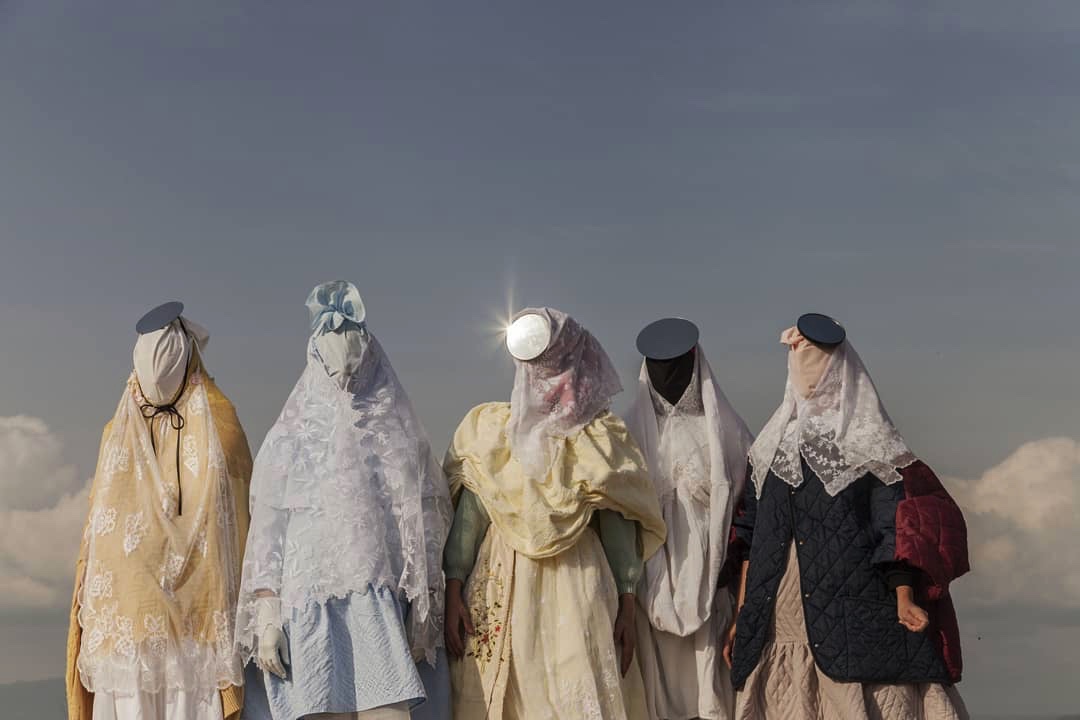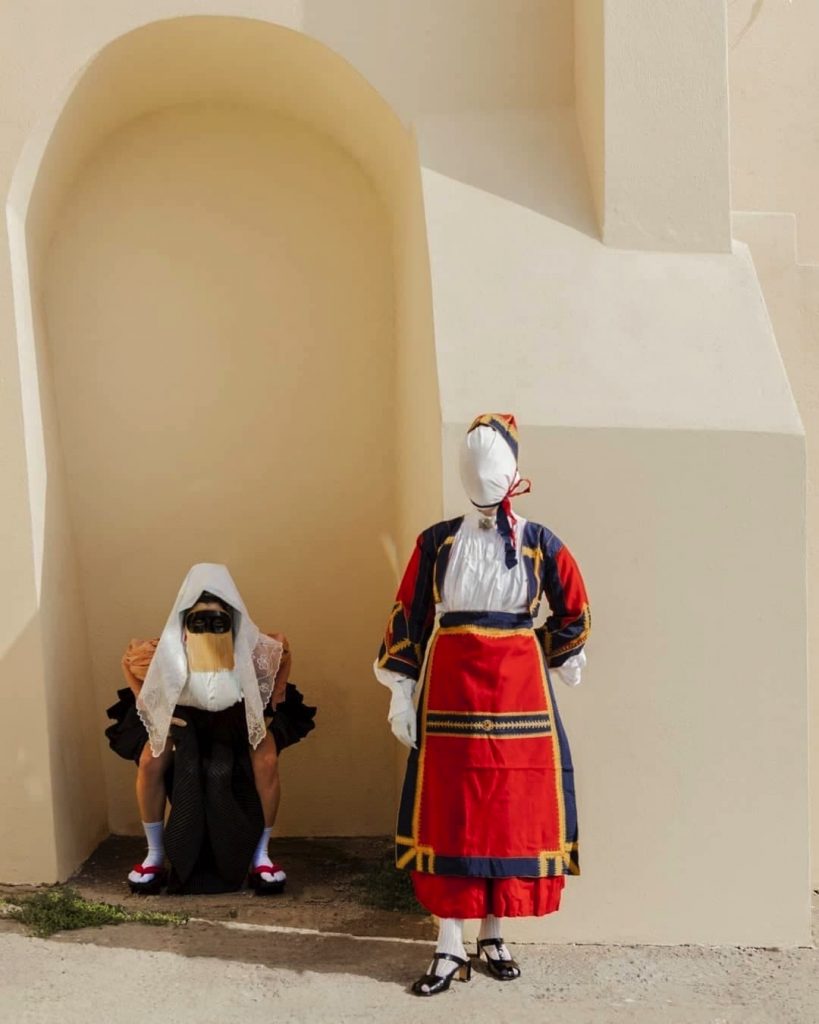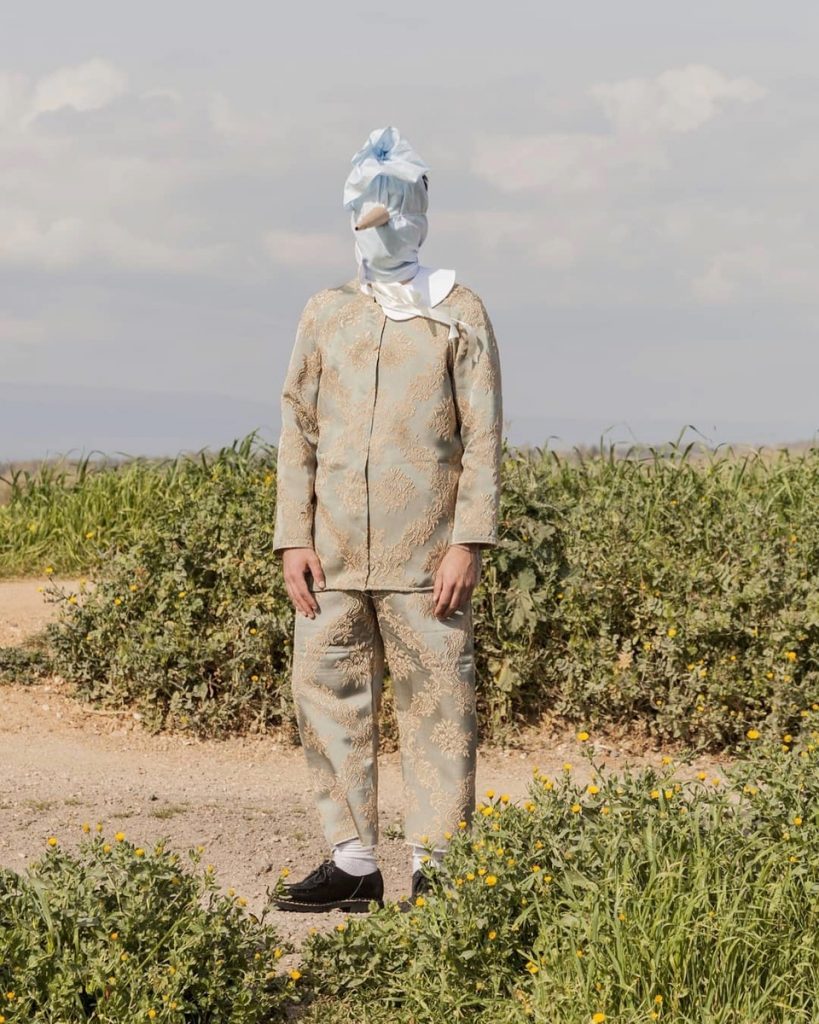Gianmarco Porru, an artistic journey between staticity and dynamism

Gianmarco Porru creates his artistic journey in balance between staticity and dynamics, where theater, performing arts and photography find space for continuous exchange. His personal research takes from the indissoluble bond with the island that bring a strong poetic and sacred component to his works. These, in a wider reflection, take shape starting from themes such as the collective body, the memory, the ritual, the party. We interviewed him for the Calcùra project.

Tell us about yourself, your education and how you came to the variety of artistic languages that characterize your work today.
I am Gianmarco Porru and my path, my training, is a bit unusual because it has had no precise direction. I started to study in Sassari, at the Academy of Fine Arts. I also continued my training in theatre, in Milan, at the Brera Academy. So I pursued this double-track between training in theatre and in the visual arts at the same time. In my personal research, too, there was always a strong dialogue between something static – I studied photography – something dynamic, and something very alive.
That was more or less all the languages of theatre, the performing arts, but also dance. All languages that I have always courted in some way. In the last period, the attempt was to unite these languages and make them coexist, removing any forcing given by a media.
So I like to deal with art, the visual arts, but I am always very much in touch with everything that happens in the theatre. I am currently part of a project that corresponds to a theatrical format, in which I like to participate as a visual artist.
The bond with Sardinia then brings together a much more poetic universe of research, of what I do, and it is always a starting point. So, I see a lot of things, but positioning Sardinia in a bigger picture, bringing it closer to other cultures, is always what interests me. It always remains the starting point, even when I do things that are very far away. However I always find a way to come home and understand what things belong to me and what I can talk about.

Let’s take as a reference some of your works as Senza titolo (Molto vicino al cielo), L.S.D.P.: what role does the body have both as a single and as a choral dimension?
The idea of the body and the idea of analysing this great media that is the body, does not belong to me so much. It interests me, but I have never asked myself too much about what a body can do. I have always thought of a choral dimension of the body, and the body as an instrument that I need to achieve. Talking about the body is very difficult for me, if it exists, there is a body that is part of a community, a chorus.
Yes, a collective body, which in the end is a collectivity that leads to a series of habitual, habitual practices, a series of rituals. Maybe this is the first time I’ve thought about it. So a body that is part of a collective and is never a single body. It is certainly a body that has a memory, that has incorporated a whole series of things given by being inserted in a geopolitical context. It certainly has these memories and even when I work with bodies I look for them, this type of habits, of movements repeated ad infinitum. I do all the work of repetition, of freedom of movement, of restriction of movement, of functionality of movements on stage. They are all movements and gestures that derive from something else.
When I recognise them and include them in the works they are part of a vocabulary that I already know in some way. The starting point was L.S.D.P. and Molto vicino al cielo, where this whole collective body certainly exists. In addition, there is a whole series of gestures and actions that already existed and that I took from a series of popular dances and traditions. Dances which, through a whole series of processes of slowing down, of repetition, I made them become something else.
Molto vicino al cielo is a L.S.D.P. a little less brave: I wanted to work on Sagra di primavera but I still couldn’t, I didn’t feel ready to work on all this dramaturgy with all these chapters. So I took a step back and said let’s work on some kind of training. After more or less a year L.S.D.P. arrived, bringing with it all that creative and ideational process.

Tell us about your relationship with the party and mythology, always in relation to your recent works such as the photographic series Sweet Fritters Ballad.
Both are always very present. I have a very close relationship with mythology, but especially with the word told, with the story, with the story, especially the oral story. Most of the things in my works start from small or big stories like Medea. I will do another work on Medea and probably another one too. And also the theme of festivals, which has to do with the idea of a collective body, in a community, where festivals are occasions to use free time.
Even the last work, that of Mediterranea was also about a space that could host a festivity, which could be a spring festival. Then things follow one another as in a normal research and always go a little deeper. L.S.D.P is a rewriting of Stravinsky‘s work Sagra di primavera. I found in its structure and in the development of the chapters a world very similar to the carnival in Sardinia, especially that of Oristano.
Moving then within the carnival, I was interested in understanding what was a disguise that was democratic, that embraced everything. Researching and cutting out mamuthones, boes, thurpos, buttudos, I found in Barbagia, a mask that is a basic disguise: a sheet, you give me your clothes, I give you mine, we exchange them and we are someone else and we party together. I liked this solution that had not been institutionalised, never been frozen in a museographic display.
The mamuthones, the boes were like that too, but as soon as they are included in a parade, in a procession. It becomes something that has to stay like that and you lose that freshness of the family aspect, of a community.
So I tried to take this method of dressing up and then do a photographic work, trying to reconstruct the looks as the disguises were constructed and from the point of view of the images’ structure as if it were a group party. The very nice thing is that you create something very fluid, where you don’t know who you are anymore from a gender point of view. But also in a very magical and mysterious aspect, which is something that interests me a lot.
The magic, the mystery, the possibility of being able to become something else through everyday, domestic tools, therefore also masking. Among other things, it is connected to Medea, cause with this chapter I would like to do of Medea after the flag of the Maga, there is a rewriting of Medea.
I would like to work also from a video point of view to a rewrite of Medea. That is not mine but it is Christa Wolf who rewrites this Medea – in some way still riding on these carnivalesque practices to bring them back to something else bigger. To reposition Sardinia once again in a larger, wider Mediterranean area.

In addition to a certain attention to the theme of costume, we noticed collaborations with brands such as Marco Rambaldi, Fantabody, Lessico Familiare. Tell us about your connection with fashion and the textile world in general.
In fact, I am a fashion enthusiast, I am fascinated by it, as in the case of Marco Rambaldi, an ideological structure, a very precise theoretical structure that we share.
I imagined these bodies to be very young and beautiful (Gianmarco Porru refers to L.S.D.P, whose preparatory work saw Gianmarco leading a contemporary dance class at Dancehaus), in fact I did a whole body positivity work with them too. So I was interested in something very young in terms of costumes. Then, I discovered Carolina Moretti, from Fantabody, who had this whole line of very different bodies, an image that fitted perfectly with what I wanted.
Fashion, textiles, this whole universe here interests me very much, as does the way of dressing linked to tradition. What interests me about Sardinia is how something becomes a custom, how a colour becomes the colour of a country, how a type of handkerchief tied in this way becomes characteristic of a place. Everything that interests me from a formal, sociological, anthropological but also poetic point of view. For example the costumes of Barbagia, which are all linked to the various phases of life, to a social recognition.
The costume brings with it a whole series of ways of being in the world, and this is what interests me. I plan to transform a performance into a sort of fashion show. I connect to fashion but with the freedom of art, and therefore without a canonical wearability and usability. I don’t know why fashion is superficial to some people, it seems to me absolutely profound.


Considering your attention and your call to the Mediterranean traditions, what is your relationship with a city like Milan where you live and work?
Milan for me is above all this: a lot of confrontation in a community that has so many facets. This is what Milan has given me in terms of cultural enrichment. A continuous confrontation, a way of looking at work from other points of view, not only in art but also in other disciplines. I am very interested in the multidisciplinary nature of things, that they can dialogue, get in touch with something else.
On the contrary, I have a different nourishment with Sardinia because it seems beautiful to me. I look for many things in silly, poetic things like opening my grandparents’ old boxes, even insisting on my grandmother’s stories.
On the other hand, I believe that Sardinia does not give me the chance to take an extra step if you lose those things. If you don’t have them, then you have to take them back, to remember them, put them in another form and rebuild them. Instead, when I move, it is as if I had already inherited them and in some way the possibility of using it.
